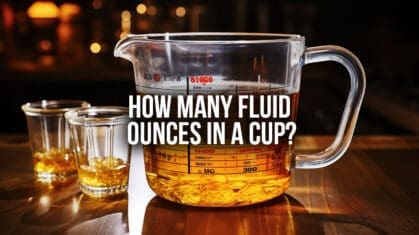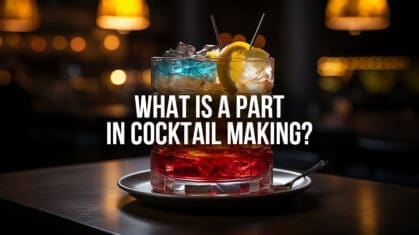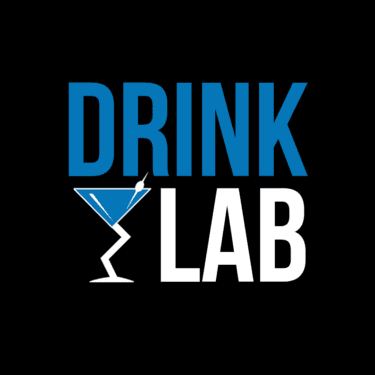The Role of the Cup Measurement in Cocktail Crafting
Greetings, cocktail aficionados and home bartenders! 🍹 You’ve probably encountered a variety of measurements while diving into the art of cocktail-making—shots, jiggers, pints, quarts, and yes, even cups. But what role does the humble cup play in this mixology tapestry? Let’s shake things up and find out!
Cup (C)
In the culinary world, a cup is a standard unit of measurement. It’s especially popular in the United States but can also be seen in recipes worldwide. In the context of cocktails, cups are generally used when making large batches, like punches or big jug cocktails.
How Many OZ in a Cup?
There are 8 fluid ounces in a standard U.S. cup.
How Many ml in a Cup?
A U.S. cup is equivalent to approximately 237 milliliters.
What Is a Cocktail Measuring Cup?
A cocktail measuring cup is a specialized tool often marked with different units of measurement, including milliliters, ounces, and sometimes even cups. It’s particularly useful for making large batches of cocktails where jiggers might be impractical.
How Many ml Is a Cocktail Cup?
If we’re referring to a standard U.S. cup, then it’s around 237 ml. However, the term “cocktail cup” can vary depending on the recipe and region.
What Is a Measure in Cocktail Making?
A “measure” in cocktail making refers to the specific amount of an ingredient. It can be given in various units, such as ounces, milliliters, or even cups for larger quantities.
How Many Cups Is 1 Part?
The term “1 part” is relative and depends on the recipe. If you choose a cup as your unit for “1 part,” then every other “part” in the recipe must also be measured using a cup.
How Many ml Is a Cocktail Measure in Australia?
In Australia, a standard measure for spirits is 30 ml, which is equivalent to 1 oz.
How Much Is 1 Measure in a Cocktail?
The term “1 measure” is often used synonymously with a “single shot,” which can range from 25 ml to 30 ml, depending on the country’s standard.
How Many mL Is a Single Measure?
A single measure varies by country but is generally 25 ml to 30 ml.
What Is 1 Standard Cup?
One standard U.S. cup is equal to 8 fluid ounces or approximately 237 ml.
How Do You Calculate One Cup?
One cup is a standardized measure equal to 8 fluid ounces or about 237 ml. You can use measuring cups to get an accurate measure.
How Many Grams in a Cup?
The number of grams in a cup depends on the density of the substance being measured. For water, 1 cup is approximately 237 grams.
Quick Conversion Table
Here’s a convenient table for some common conversions:
| Measurement | Fluid Ounces (oz) | Milliliters (ml) | Grams (for water) |
|---|---|---|---|
| 1 U.S. Cup | 8 oz | 237 ml | 237 g |
| 1 Australian Measure | N/A | 30 ml | 30 g |
| 1 U.S. Shot | 1.5 oz | 44 ml | 44 g |
Feel free to keep this table handy for your next large-scale cocktail adventure!
So, how often do you find yourself using cup measurements in your cocktail recipes? Ever tried scaling a cocktail recipe from a single glass to a large punch bowl? 🍹
Cheers to your next cocktail creation, no matter the size! 🥳
Other measurements you might find helpful
Teaspoon (tsp) and Tablespoon (tbsp)
- Teaspoon (tsp): Often used for ingredients like sugar, syrups, or bitters. 1 teaspoon is approximately 5 ml.
- Tablespoon (tbsp): Sometimes used for juices or syrups. 1 tablespoon is around 15 ml, equivalent to a half shot.
Dash and Splash
- Dash: This is an informal measurement, often used for bitters. A dash is roughly 1/6 oz or about 5 ml.
- Splash: This is also an informal measurement that’s a bit more than a dash, generally around 1/3 oz or about 10 ml.
Jigger
- Jigger: A jigger is a bartending tool used to measure spirits, and it often has two sides. The standard jigger measures 1.5 oz (45 ml) on one side and 1 oz (30 ml) on the other.
Pint and Quart
- Pint: Rarely used in cocktails, but useful to know. A pint is 16 oz (about 475 ml).
- Quart: Also rarely used in cocktails. A quart is 32 oz (about 950 ml).
Parts
- Parts: Some recipes don’t specify exact measurements but say things like “1 part this, 2 parts that.” This lets you easily scale your cocktail. A “part” could be an ounce, a cup, a liter—whatever you choose!
Cup (C)
- Cup: Mostly used for larger cocktail batches or punches. 1 cup is 8 oz (about 240 ml).
Oz & ml
- Oz: Ounces, abbreviated as “oz,” are more commonly used in countries like the United States.
- ml: Milliliters, or “ml,” are part of the metric system, a measurement system used worldwide. When it comes to cocktails, many classic European recipes use milliliters.
Drop:
- A very small amount of liquid, usually used for extremely potent ingredients.
- 1 drop is approximately 0.05 ml.
Barspoon:
- A long spoon used for stirring cocktails. The volume can vary, but it’s often around 1 teaspoon (5 ml).
Gill:
- A less common measurement, especially in the U.S.
- 1 gill = 4 fluid ounces = 118 milliliters
Dram:
- A unit more commonly associated with Scotch and other spirits.
- 1 dram = 1/8 fluid ounces = 3.697 milliliters
Fifth:
- Refers to a fifth of a gallon. It’s an older U.S. measurement for a bottle of spirits.
- 1 fifth = 25.6 fluid ounces = 757 milliliters
Handle:
- A large bottle of liquor, typically 1.75 liters or 59.2 oz.
Jigger vs. Shot:
- While often used interchangeably, a jigger is a tool for measuring and can have two different measurements on each end, while a shot typically refers to a 1.5 oz pour in the U.S.
Stick:
- Used when making cocktail garnishes or muddling ingredients, like a stick of cucumber or celery.
Twist:
- A piece of citrus peel used as a garnish, often twisted over the drink to release essential oils.
Neat:
- A way of serving spirits without any mixers, ice, or water, usually in a short glass.
On the Rocks:
- Serving a drink over ice.
Up:
- A drink that’s shaken or stirred with ice and then strained into a glass without ice.
Armed with this knowledge, you’ll be able to master any cocktail recipe from around the globe. 🌍
So, which of these measurements do you often find yourself using? Ever tried scaling a single cocktail recipe to a big party punch? 🍹🎉







